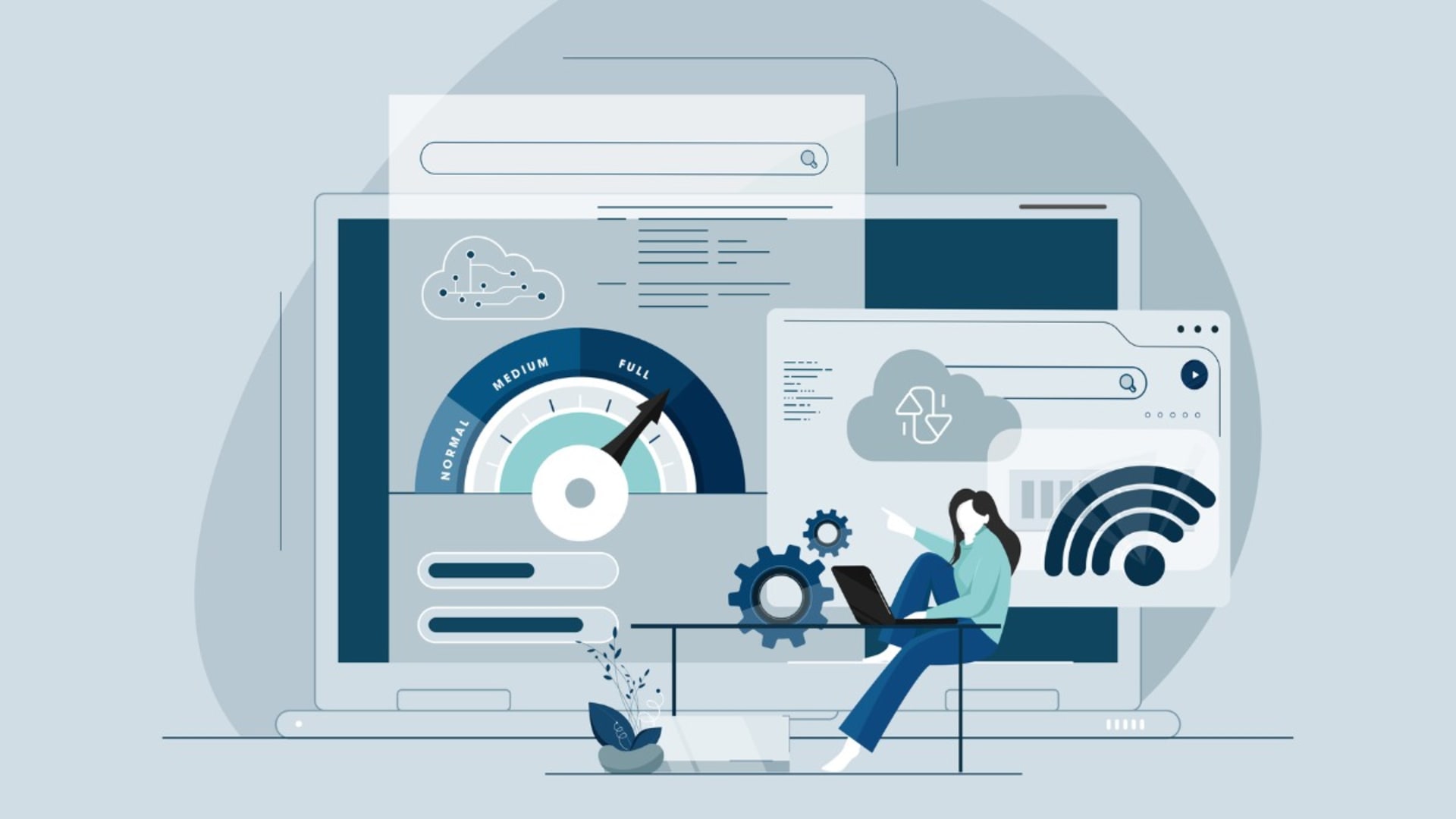Software delivery is the entire process behind the scenes of the creation of software products. It covers everything from the moment of product conceptualization to the moment when the consumer installs and uses the product.
Considering the scarcity of software developers these days, as well as how important they are to an IT business, companies must remain efficient with them. A software delivery team must have good architecture and team structure that can offer quality software operating at its best.
Top software delivery teams are extremely organized and better prepared to handle whatever problems might surface throughout the process. They help companies put out better products in less time and, in most cases, for less money than in-house dev teams.
Building top software delivery teams requires a lot of organization. However, taking the time to structure a software delivery team definitely makes a huge difference in any IT company.
What Is a Software Delivery Team?
Software delivery teams are relatively small and flexible groups of people responsible for the entire process of delivering software products from end to end. Software delivery teams work in a highly collaborative and transparent environment in which every member sits and plans together.
Different software delivery teams typically work within the same business area while focusing on different projects. A company oftentimes has various teams, such as a team working on smartphone apps and a separate team developing desktop platforms.
These teams contain different types of experts that make use of their different skills and strengths to produce high-quality software products in the least amount of time possible. Every professional needed to deliver a project integrates with the software delivery team.
Software Delivery Models
The Waterfall approach is a very sequential software delivery process in which each step depends on completing the previous one. It works as a continuous flow where the process moves progressively from conception to deployment following a set series of phases.
While this linear approach is still necessary, in some cases, to create a high-quality software product, it’s still unnecessarily slow and inflexible. A simple mistake at the beginning of the process is all it takes to render the entire product inoperable at the end stages.
A typical software delivery model using this approach could take months or years to complete. Here are a few steps that it would involve:
- Listing the business needs for the software product
- Adding technical requirements
- Detailing structural features, functional designs, and other requirements
- Creating the code and integrating it
- Testing the quality and functionality of the software
- Releasing the product onto the market
The Agile Approach
The Agile approach makes software delivery more flexible, efficient, and interactive by breaking down the project into different components. Different team members specializing in certain features or functionalities develop these components individually at the same time.
Instead of taking several months or even years to complete tasks, developers can meet their objectives in a few weeks using the Agile approach. Companies manage to release new products and updates a lot faster and more efficiently.
This software delivery approach originated additional models and methodologies that are extremely popular among software delivery teams. Some of them include DevOps, continuous integration and continuous delivery (CI/CD), Kanban, and Scrum.
There are many different ways to implement the Agile approach. For instance, a software delivery model using the Scrum methodology would include the following steps:
- A product owner provides a list of requirements.
- The scrum team plans how to implement the different items on the list.
- They complete each task in different sprints, meeting every day to assess progress and make changes.
- At the end of the sprint, the team collects feedback from stakeholders and customers.
- A new sprint begins.
- The process repeats until the product is complete.
Companies should try implementing the Agile approach if they’re looking to deliver software products and updates faster.
Software Delivery Team Structure
The idea behind structuring a software delivery team is to have everyone needed to fully design and complete a product in the same team. Different companies require different roles within their teams, but some of them are necessary for every software delivery team.
Product Managers
Product managers have a deep understanding of the product and the needs of the customer. While clients can’t provide feedback constantly, the product manager does, pushing the team to move forward and identifying ways to improve the product regularly. They help maintain balance, keep the team’s priorities in check, and organize backlog and nontechnical requirements to align them with a strategic vision.
Designers
The designer is one of the most important roles in a software delivery team. These professionals work with the product manager to create software that allows the client to do whatever they need to do. This is a broad role that requires both user experience (UX) designers and creative designers.
UX designers are mindful of the basic needs of the users and can create workflows and map decision journeys to make improvement suggestions. They are also accessibility experts and always try to maintain simplicity.
Creating a good product only takes a company so far. It’s also important to have professionals dedicated to creating a good visual design and producing a polished finished product. This is where creative designers come into play. Most often, UX and creative designers merge into one role.
Developers
Software developers essentially create the company’s product. When you hire software developers, it’s their responsibility to build and integrate the code that will make the software product work. They usually separate into back-end developers and front-end developers.
Back-end developers transform business logic into code. They create the APIs and microservices that power the applications, write unit tests, and work closely with QA engineers to address security risks. They also use languages like Java or C++ to optimize databases and solve any issues related to the program’s performance.
Front-end developers build the parts of the software product that the end users interact with. They use HTML, CSS, and JavaScript to help keep page load times low and troubleshoot any issues that might surface. They’re the go-to team to resolve most bugs.
Quality Assurance (QA) Engineers
QA engineers create test scripts and build test automation practices throughout the development process. They review code, ensure the creation of proper unit tests, and work with DevOps to make sure they address and log any performance issues. QAs help keep the testing infrastructure running smoothly.
Software Architects
Similarly to how the project manager handles the nontechnical aspects of the project, the software architect makes all of the decisions when it comes to the technology. They’re responsible for understanding how APIs will work, determining the best coding languages to use, and choosing the correct coding standards to enforce.
Software architects understand how every different part of the software fits together and ensure that everything’s correct from a technical standpoint.
Business Analysts
Business analysts, also known as data analysts, product consultants, and associate product managers, help product managers gather requirements from stakeholders and understand the value of their requests.
They know how to convert business requirements into actionable software requirements and help prioritize the team’s efforts to acquire a higher return on investment. They’re often equipped with a background in software development or quality assurance and have analytical minds accompanied by great communication skills.
Other Roles
These are some of the most important roles that exist in a software delivery team; however, many others contribute to the processes from conceptualizing a product to getting it to the hands of customers.
Salespeople, customer support staff, product marketing managers, HR, line managers, and everyone else between the CEO and mailroom temp play an important part in the development and delivery of the product.
Why Companies Need Software Delivery Teams
There are many reasons why companies need software delivery teams, including the following.
- Increased team efficiency: Software delivery teams are self-organized, increasing motivation and promoting project ownership. Each team member makes appropriate decisions in their role and the whole team works in unison, boosting overall efficiency.
- Visibility and transparency: Especially when using an Agile methodology, all aspects occurring in each sprint are closely reviewed and evaluated. Team members address every step from ideation to coding and testing in an open fashion.
- Greater flexibility and continuous improvement: The increased visibility and transparency make it possible to detect errors in the software as soon as they happen. At the same time, if a product’s feature isn’t performing as expected, the team has the flexibility to modify it based on the customer’s needs.
- Improved risk management: Because all sprints are so closely monitored, there’s a huge decrease when it comes to the risk of the project failing. Agile teams help identify risks much faster than software developers who follow the Waterfall approach.
- Intrinsic knowledge: All team members have full knowledge of every aspect of the project. Knowledge transfer is much easier, there are no silos, and every member is aware of the roles and responsibilities of one another.
- Faster development speed: The shared knowledge, open communication, and visibility that contribute to the flexibility and adaptability of the team also minimize downtime and allow for faster development speeds.
Working With BairesDev’s Software Delivery Teams
Many companies choose to delegate software development to a software delivery team created by an outsourcing provider. These teams monitor the business’s tech needs, proactively suggest improvements, and develop the right software according to any unexpected requirement that arises.
Outsourced delivery teams comprise skilled and experienced members that cover a wide variety of tasks from monitoring technology to solving everyday tech problems. They help reduce internal supervisory burdens, ensure the security of sensitive data, and ultimately help the business grow.
These teams typically either take on a software development project from beginning to end or integrate with the company’s in-house team to help with production. Outsourcing providers make sure to select talent that leads to faster delivery times.
Outsourced software delivery teams include experts who possess all the skills that a company might need to complete the development of a software product. These capabilities include team management, Agile and DevOps best practices, UX design experience, architectural guidance, knowledge regarding the latest development technologies, and engineering proficiency.
Working with an outsourced software delivery team comes with many advantages. Affordable costs are some of the most important benefits of this business model. Businesses have access to teams of experts completely equipped with all the necessary skills and infrastructure at affordable prices. They also save money by not having to invest in space and technology and not having to train in-house team members.
Another benefit of working with outsourcing providers is scalability. Software delivery teams are available for scaling up and down depending on the different needs and stages of the project. Meanwhile, in-house developers have the ability to focus on core business tasks, improving the quality of their work.
As previously mentioned, outsourced software delivery team members are extremely knowledgeable, which means that it’s possible to find experts in a wide variety of fields otherwise unattainable for hiring in house. Some of their knowledge might not necessarily relate to the scope of the project, but they often help envision tech that covers more areas and provide multifaceted solutions.
Because they’re so experienced, these external team members can provide insights that take into consideration how their previous projects went. They might have the ability to provide diverse perspectives and impartial opinions regarding the project at hand.
Software security is indispensable when it comes to any software development project. Outsourced software delivery teams usually contain a few experts in cybersecurity and data protection. These security-oriented members guard the company’s networks at all times and protect sensitive information.
How to Choose the Right Outsourced Software Delivery Team
There are many outsourcing providers out, there but not all of them are the perfect fit for every company. Businesses should look for reliable outsourcing partners with experienced teams that also share their product vision and company values.
The first step in choosing the right outsourced software delivery team is verifying the providers’ portfolios and looking for experience in the domain at hand. The services they have to offer must match what the company is looking for. These companies should try to:
- Find out if the delivery team has worked on similar projects
- Determine the level of experience of the team members
- Confirm the maturity of project management
- Understand if the team can handle the project scope
Outsourcing providers might not always be able to disclose details regarding previous projects due to non-disclosure agreements. However, they should be able to broadly outline them and explain how they handled development and how the final product benefited the clients.
Once the company finds a couple of outsourcing providers that interest them, they should start interviewing. It’s important to evaluate how the outsourcing providers communicate and if they can understand the requirements of the company.
The next step is choosing an outsourcing provider and conveying the product vision. The company needs to explain what the product should do, how people should use it, how much profit it needs to bring the company, what it should look like, and any other aspects relevant to the development of the product.
The final step is drafting and signing a contract. A good contract should specify every detail associated with the project’s development, including all of the security measures currently in place. Companies should ultimately choose an outsourcing provider that sees them as a partner and not just another client.







